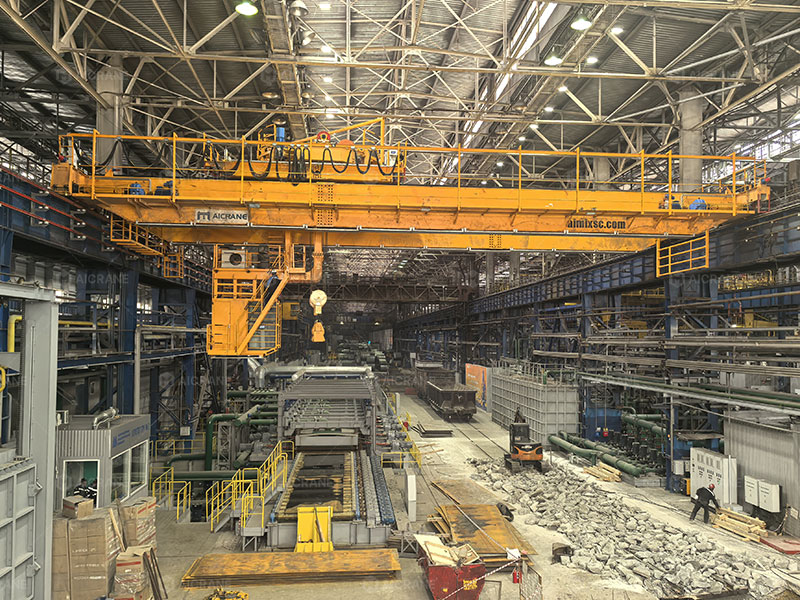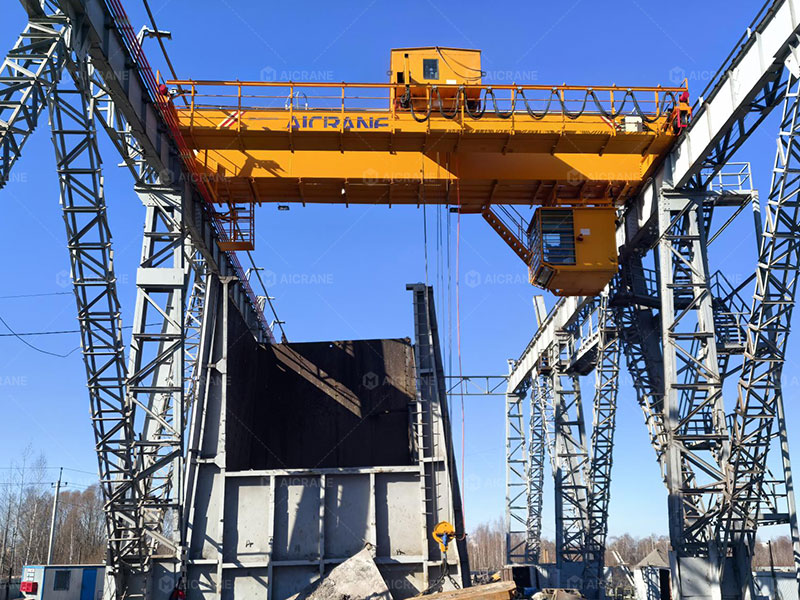As industries increasingly adopt environmentally conscious practices, the focus on sustainability has expanded beyond end products and into the machinery that supports production. One such critical piece of equipment is the Electric Overhead Traveling (EOT) crane. EOT cranes are essential for lifting and transporting heavy loads across various industries, including steel, automotive, construction, energy, and manufacturing. With their widespread use, ensuring sustainable practices in both the manufacturing and operation of EOT cranes can significantly contribute to reducing carbon footprints and enhancing industrial efficiency.

1. The Need for Sustainability in Lifting Equipment
Traditional heavy machinery manufacturing and operation have often been associated with high energy consumption, significant material use, and a limited focus on lifecycle efficiency. However, as sustainability becomes a core objective for companies worldwide, EOT crane manufacturers and users are rethinking how these cranes are designed, built, operated, and maintained.
Key goals of sustainable EOT crane technology include:
-
Reducing energy consumption
-
Minimizing material waste during manufacturing
-
Enhancing recyclability of components
-
Extending product lifespan
-
Ensuring safe and eco-friendly operational practices
2. Sustainable Design and Materials
Lightweight and High-Strength Materials
The shift toward lightweight yet high-strength materials such as high-tensile steel and aluminum alloys helps reduce the weight of EOT cranes, thereby lowering the energy required to operate them. Lighter cranes also reduce dynamic loading on supporting structures, resulting in lower building costs and material use.
Modular Design
Modern EOT cranes are increasingly built using modular designs, which enable easy disassembly, transport, and reassembly. This modularity not only simplifies installation and maintenance but also promotes reusability of crane components, significantly reducing material waste.
Use of Recycled Materials
Manufacturers are incorporating recycled metals and sustainable raw materials into the crane structure and mechanical components without compromising performance. This approach helps conserve resources and reduces emissions associated with raw material extraction and processing.
3. Energy Efficiency in Crane Operation
Energy efficiency is a cornerstone of sustainability in EOT crane operations. The latest technologies offer a variety of ways to reduce energy use:
Variable Frequency Drives (VFDs)
VFDs allow precise control of motor speed, ensuring smoother acceleration and deceleration of the crane’s motion. This not only reduces energy consumption but also decreases mechanical stress, thereby extending the lifespan of crane components.
Regenerative Braking Systems
Advanced EOT cranes now feature regenerative braking, which captures the energy generated during braking and feeds it back into the power grid or reuses it for other crane operations. This system significantly enhances energy efficiency, particularly in high-duty cycle environments.
Smart Motion Control
By integrating intelligent motion control systems, cranes can optimize their travel paths, reduce idle times, and avoid unnecessary movements. These small adjustments cumulatively result in significant energy savings.

4. Reducing Emissions and Noise Pollution
Electrification and Renewable Energy Use
EOT cranes are inherently electric, which is already more sustainable than diesel-powered alternatives like mobile cranes. However, the sustainability benefit increases further when powered by renewable energy sources such as solar or wind. Many factories now power their workshop overhead cranes using on-site renewable energy systems, reducing dependency on fossil fuels.
Low-Noise Operation
Modern EOT cranes are designed with noise-dampening technologies, including rubber buffers, enclosed gears, and low-noise motors. This is especially important in urban or enclosed environments where noise pollution affects human health and work conditions.
5. Intelligent Monitoring and Predictive Maintenance
IoT-enabled sensors and monitoring tools have transformed how cranes are maintained. Predictive maintenance not only improves safety and productivity but also significantly contributes to sustainability:
-
Extends Equipment Life: By addressing wear and tear early, components can last longer, reducing the frequency of replacements and waste generation.
-
Minimizes Downtime: Efficient maintenance reduces energy and resources spent on unplanned shutdowns and repairs.
-
Optimized Resource Use: Real-time data helps schedule inspections and lubrication precisely when needed, avoiding unnecessary material usage.
6. Sustainable Manufacturing Processes
The manufacturing process itself plays a crucial role in the overall sustainability of EOT cranes:
Energy-Efficient Production Lines
Many overhead crane suppliers have adopted energy-efficient processes in fabrication, welding, and machining, such as:
-
LED lighting and automation in factories
-
Closed-loop cooling systems for hydraulic machinery
-
Use of green manufacturing certifications (ISO 14001)
Waste Minimization and Recycling
Lean manufacturing techniques are now used to minimize scrap and recycle production waste, including metal offcuts, oils, and packaging materials. Some manufacturers also offer take-back programs to recycle or refurbish old cranes.
7. Lifecycle Consideration and End-of-Life Recycling
Sustainability in EOT cranes is not limited to their active life. Thoughtful planning for end-of-life management ensures minimal environmental impact:
-
Disassembly-Friendly Designs: Bolted joints and standardized parts allow easy dismantling and separation of recyclable materials.
-
High Recyclability: Most parts of an EOT crane (steel frames, copper windings, aluminum components) are fully recyclable.
-
Second-Life Opportunities: Refurbished or retrofitted cranes can be reused in less demanding environments, prolonging their usefulness.
8. Promoting a Circular Economy in the Crane Industry
The concept of a circular economy is gaining momentum in crane manufacturing. It emphasizes:
-
Product longevity
-
Component reuse
-
Refurbishment and remanufacturing
-
Waste minimization
Manufacturers that adopt circular economy principles can reduce costs, improve brand image, and meet increasingly stringent environmental regulations.
9. Case Study: Aicrane’s Sustainable Approach
At Aicrane, we prioritize green innovation in every stage of our EOT crane lifecycle. Here’s how:
-
Eco-friendly materials are selected with recyclability in mind.
-
Our cranes are equipped with energy-saving motors, VFDs, and regenerative systems.
-
Remote monitoring systems help customers reduce energy use and improve maintenance efficiency.
-
We offer retrofit services to upgrade older cranes to modern energy-efficient standards.
-
Our after-sales support focuses on optimizing crane usage while minimizing environmental impact.
Conclusion
Sustainability in EOT crane manufacturing and operation is no longer optional—it is a necessity in today’s environmentally conscious industrial landscape. From design and materials to energy-efficient operations and end-of-life recycling, every stage offers opportunities to reduce environmental impact and contribute to a greener future. As technology advances, EOT cranes will continue to evolve, helping industries achieve their productivity goals while aligning with sustainable development practices.
For companies seeking long-term value, investing in sustainable EOT crane solutions not only supports environmental goals but also delivers real economic and operational benefits. Now is the time to rethink your lifting equipment strategy through the lens of sustainability.